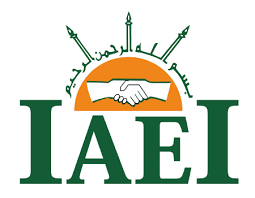Islamic Microfinance for Poverty Alleviation
DOI:
https://doi.org/10.58968/tj.v2i2.302Keywords:
Islamic microfinance, Poverty alleviation, BibliometricAbstract
Poverty is a serious problem faced by Indonesia. Most Indonesians are vulnerable to poverty. Various poverty alleviation programs have been attempted and initiated, both by the government and organizations outside the government. The process of changing poverty alleviation policies continues to be renewed. Because all parties realize that poverty is more caused by structural problems, the term structural poverty has emerged. Basically, the government has conducted many programs to alleviate poverty. But in reality, these programs have not been right on target. There is a need for a new design, so that it can be ensured that the program is right on direction and right on target. The Islamic economic system, including Islamic financial institutions, has the right and obligation to participate in managing the resources in this country. This study aims to determine the development of Islamic microfinance for poverty alleviation research trends published by leading journals on Islamic financial economics. The data analyzed consisted of 87 indexed research publications. The data is then processed and analyzed using the VoSviewer application to determine the bibliometric map of Islamic microfinance for poverty alleviation research development.
Downloads
References
Afriyandi, Y. (2015). Microfinance Institutions Based on Joint Business Groups; A Strategy for Structural Poverty Alleviation. JIE Lariba Volume 1, Issue 1, 2015
Ahlgren, P., Jarneving, B., & Rousseau, R. (2003). Requirements for a co-citation similarity measure, with special reference to Pearson's correlation coefficient. Journal of the American Society for Information Science and Technology, 54(6), 550-560.
As-Salafiyah, A. (2022). The Role of Islamic Economics on Covid-19 Recovery. Islamic Economics Methodology, 1(1).
Bashir and Rashidah (2014). Effects of Spiri-tuality on Board ServicePerfor-mance in Malaysian Microfinance Firms. Journal of Finance, Ac-counting and Management, No 1: 88-108, January 2014. Malaysia
Baswir, Revrisond. 2009. Manifesto of Economic Democracy. Yogyakarta: Student Library
Börner, K., Chen, C., & Boyack, K. W. (2003). Visualizing knowledge domains. Annual review of information science and technology, 37(1), 179-255.
Boyack, K. W., Klavans, R., & Börner, K. (2005). Mapping the backbone of science. Scientometrics, 64(3), 351-374.
BPS. (2021). Number of poor people in Indonesia. Available at http://www.bps.go.id
Chen, C., & Xi, H. (2003). Meta-programming through typeful code representation. ACM SIGPLAN Notices, 38(9), 275-286.
Fitria, L., Hija, N., Arsyi, M., & Firdausi, S. K. (2022). A Bibliometric Mapping on Maqasid Shariah in Islamic Perspective. Maqasid al-Shariah Review, 1(1).
Gunawan, R. (2023). Smart City in Indonesia: Review Studies and Lessons for Sumatra. Business and Sustainability, 1(1).
Ikhwan, I. (2021). Text analytic on halal research. Journal of Islamic Economic Literatures, 2(2).
Izza, N. N. (2022). A Scientometric Analysis on Halal Awareness. Halal Tourism and Pilgrimage, 2(1).
Khadijah S, Saleh NEP, Kamarudin MF, Haryadi A. 2013. Sustainability of Islamic Micro Finance Institutions (IMFIs). Journal of Accounting and Finance. DOI. 10.13189/ujaf.2013.010205
Kholiq, M., Fikriiadi, M., & Sahnan, M. (2022). Ibn Khaldun Economic Thought: A Literature Review and Bibliometric Analysis. Islamic Economic and History, 1(1).
Kuncoro, M. (2010). Development Economics: Problems, Policies, and Politics, (Jakarta: Erlangga Publisher, 2010), pp. 19-24
Lubis, D.S. (2016). Empowerment of MSMEs through Sharia Financial Institutions as an Effort to Reduce Poverty in Padangsidimpuan City. At-Tijaroh Volume 2, No. 2, July-December 2016
Nasution, A. A., Harahap, D., & Uula, M. M. (2022). Environmental, Social, Governance (ESG) and Islamic Finance: A Review. Management and Sustainability, 1(1).
Nuraini, I. (2022). A Bibliometric Analysis of Pesantren and Entrepreneurship. The Economic Review of Pesantren, 1(1).
Praptomo, Dian. 2000. "Strategy of Sharia Microfinance Institution in Developing Micro Business (Case of LKMS BMT KUBE Sejahtera Unit 20 Sleman Regency Yogyakarta Province)".
Puspita, A. T. (2022). Islamic Personal Finance: A Review using Biblioshiny-R. Fara'id and Wealth Management, 2(1).
Royani, Yupi; Mulni A. Bachtar; Kamariah Tambunan; Tupan; and Sugiharto. 2013. Mapping of Scientific Papers of LPNK: Case Study of LIPI and BPPT (2004-2008).
Rusydiana, A. S. (2019). Bibliometric analysis of Scopus-indexed waqf studies. Ekonomi Islam Indonesia, 1(1), 1-17.
Sari, M., & Maysyaroh, S. (2022). How Far Takaful Efficiency Has Been Researched?: A Bibliometric Approach from Dimensions Database. Islamic Marketing Review, 1(1).
Uula, M. M., & Ikhwan, I. (2022). Sustainable Accounting: Islamic Perspective and The Research Path. Accounting and Sustainability, 1(1).
Zaman H. 1999. Assessing the Poverty and Vulnerability Impact of Micro-Credit in Bangladesh: A case study of BRAC.
























